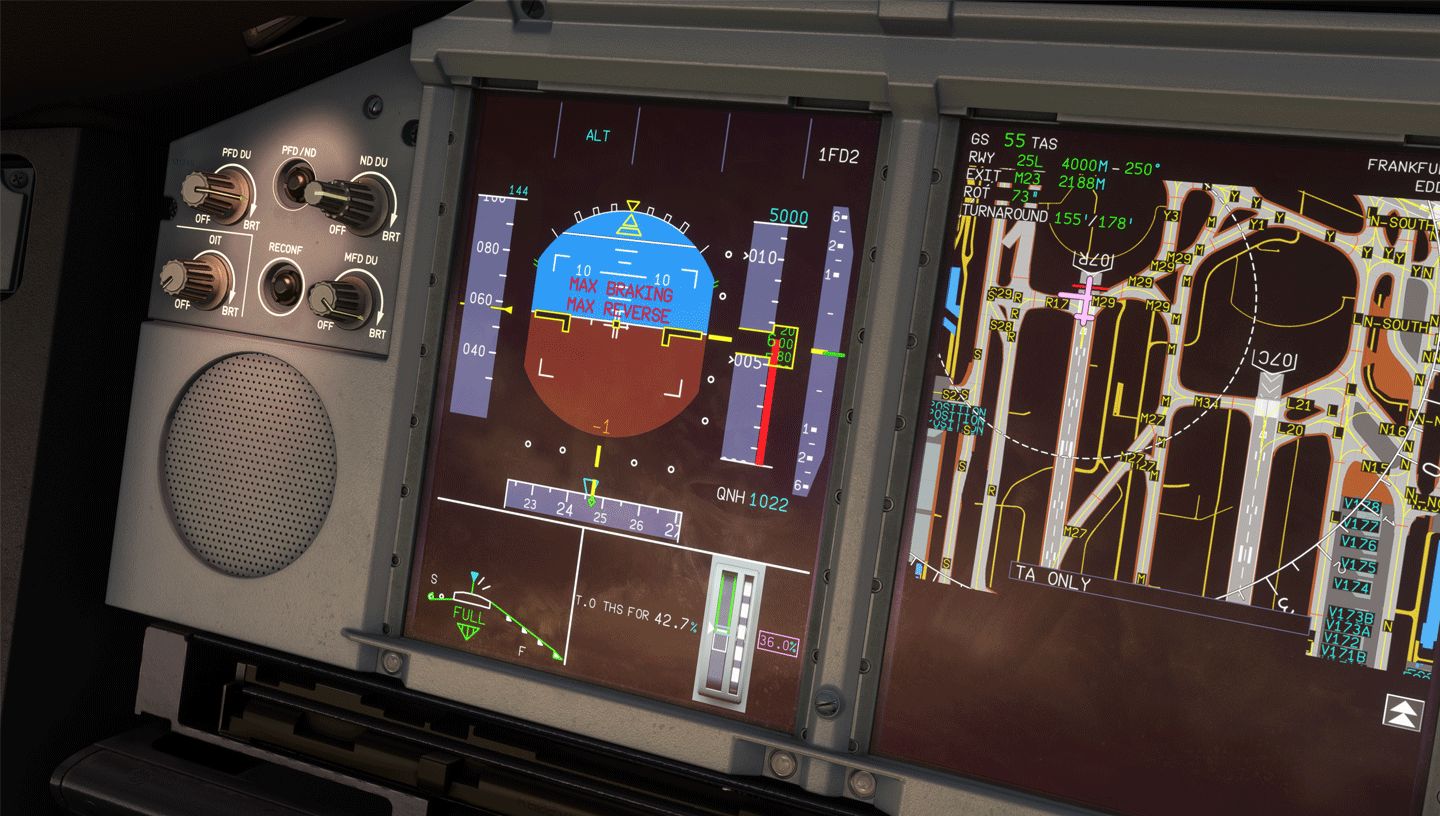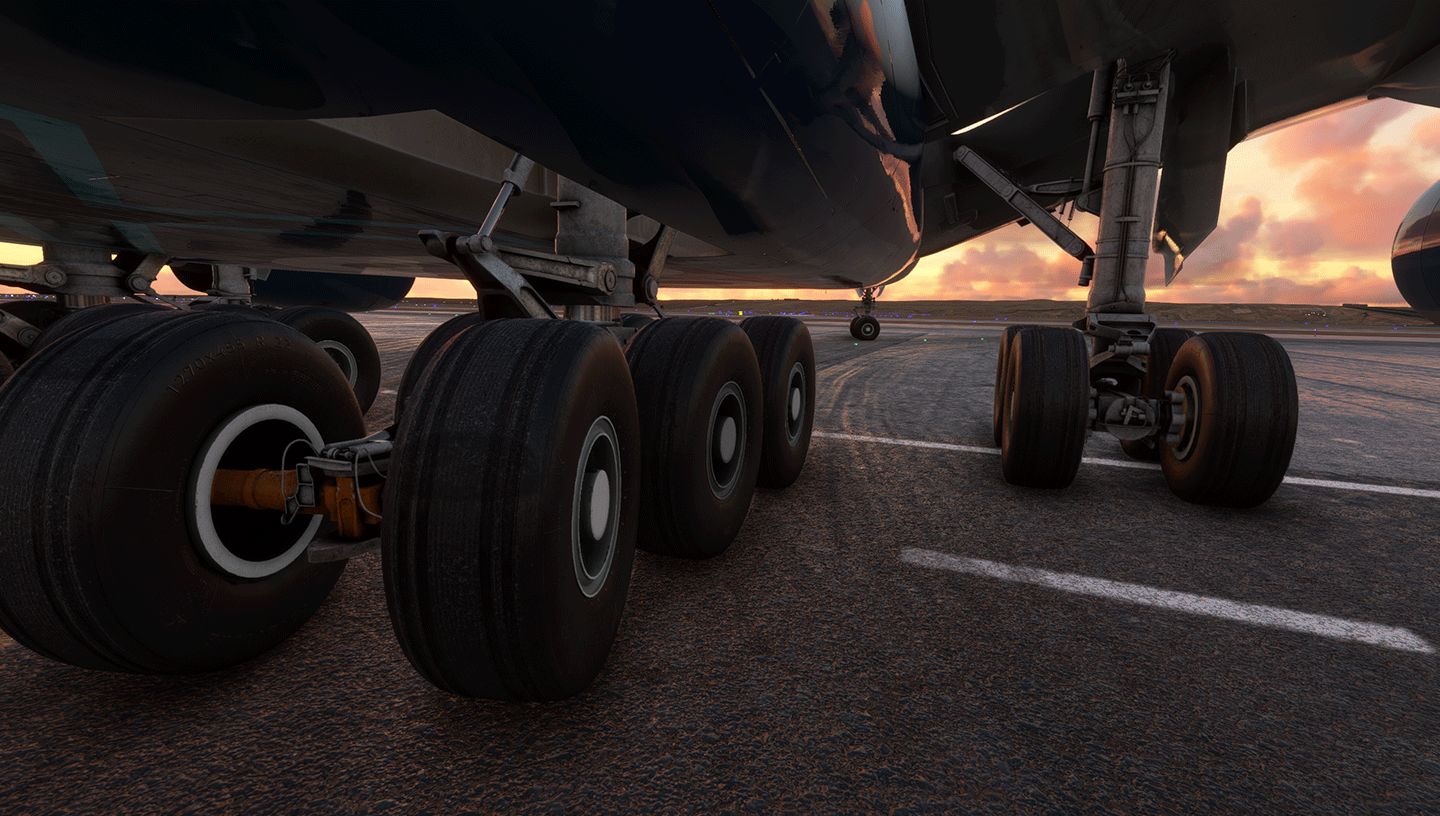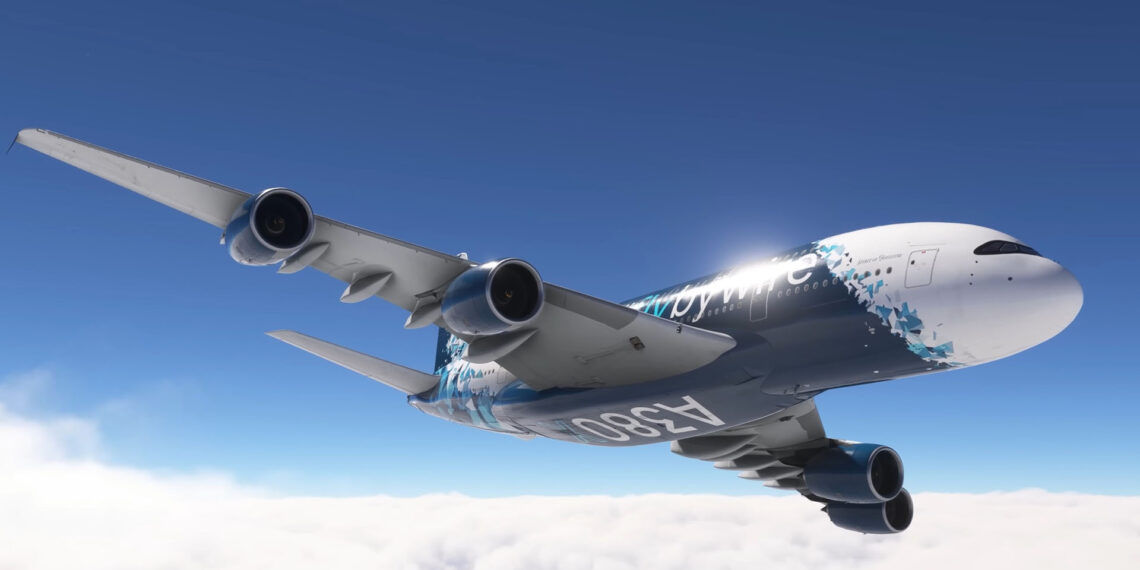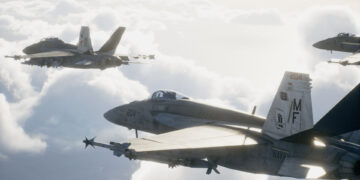The upcoming Airbus A380 by FlyByWire has always been one of the most anticipated aircraft for Microsoft Flight Simulator, and an open alpha release appears to be close.
Not only does it look awesome, but it’s going to be completely free, which for an add-on this massive complex completely made from scratch, it’s pretty unique in the flight simulation world.
Today FlyByWire released a blog post detailing what the alpha release is going to look like, albeit they did not yet provide a release date.
The developers mention that the alpha version will “under most circumstances guarantee a decent A to B flight on VATSIM,” but there are still many systems under active development and some are inoperative. These will be added over time.
The process will be similar to the first two years with the A32NX Airbus A320 mod that put FlyByWire on the map.




Since the aircraft isn’t fully optimized yet, users can expect about 25% worse performance than the A32NX, and below you can find the system requirements.
Minimum (1080p30 Low)
- CPU: Intel i5-4460 or Ryzen 3 1400
- GPU: Nvidia GTX 1060 6GB or AMD RX 480 8GB
- Memory: 8GB
- Storage: 28GB* free space (HDD or SSD)
*At least 4-8GB needed for pagefile (virtual memory)
Recommended (1440p30 High)
- CPU: Intel i5-8400 or Ryzen 5 3600
- GPU: Nvidia RTX 3060 12GB or AMD RX 6600 XT 8GB
- Memory: 16GB
- Storage: 20GB free space (SSD)
Flying By Wire (1440p/4K DLSS 60 High/Ultra)
- CPU: Ryzen 7 7800X3D
- GPU: RTX 4080 Super 16GB or 7900 XTX 24GB
- Memory: 32GB
- Storage: 20GB free space (SSD)
Below you can read a comment that summarizes what we should expect.
Please note this will not be a finished/polished product. The plane will not be unflyable or broken, however during further development, bugs will appear that may require some temporary workaround or procedure to mitigate.
If you attempt to break the plane deliberately, you will likely succeed i.e. exceeding normal law protections, locking the A/P in an invalid state, or otherwise exiting normal flight limits. In this regard, it will be fragile when compared to the current state of the A32NX – as a reference.
We also get an extensive description of some of the systems that are implemented.
Flight Management and Navigation Systems
Custom flight management system (FMS), based on the updated fms-v2 implementation. All ARINC424 leg types are supported, with an aim for precise and accurate drawing of all procedures, robust sequencing of waypoints and accurate MFD F-PLN pages, including support for holdings.
Flight Displays and Electronic Checklists
Accurate representations of the Primary Flight Display (PFD), Navigation Display (ND), Engine and Warning Display (EWD), and System Display (SD) featuring precise MEMOs for numerous systems. We’ve also implemented electronic checklists for both normal procedures and some abnormal procedures, along with QNH pre-selection in the Flight Control Unit (FCU).
Core Aircraft Systems and Failure Simulations
Systems including electrical, pneumatic, environmental (air conditioning, ventilation, and pressurization), APU, and fire protection are fully modelled, including their inner components, logic, and communication protocols. Over 140 failures are available via the EFB, though, as with everything else, full simulation is not always guaranteed.
Flight Control Surfaces and Wing Flex Simulation
Flap load relief systems (FLRS) and auto extension/retraction (AES/ARS) have been accurately modelled with hydraulic and electrical actuation of flight control surfaces, though flaps and slats are still to be completed. The triple aileron simulation on each wing creates the “Valse Des Ailerons” (VDA/Aileron Dance). Additionally, a custom physics-based flex system for wings, rudder, and elevator has been implemented. The wings, simulated as soft bodies, react to fuel load, wing loading during take-off, and feature accurate and responsive dynamic wing flex.
Protection Features and Enhanced Awareness
Brake to Vacate (BTV) plays a crucial role in automatically managing braking to reach a runway exit preselected by the flight crew. It also enhances pilot awareness of braking distances before and during landing.
Runway Overrun Warning/Protection (ROW/ROP), which helps minimise the risk of runway overrun at landing. The ROW and ROP are available as soon as the autobrake mode is armed and can be used independently from the BTV.
Onboard Airport Navigation System (OANS), which enhances the flight crew’s situational awareness by displaying a moving map of the airport. Additionally, we implemented Radio Altimeters (RAs) simulated as three independent units, the Ground Proximity Warning System (GPWS) with messages on the Primary Flight Display (PFD), and the Terrain Display featuring A380-specific animations.
Landing Gear and Taxi Systems
Tilting landing gear, with realistic NWS (Nose Wheel Steering) and BWS (Body Wheel Steering), with high-detail modelling and textures, powered by 5000 PSI Hydraulic lines, valves and actuators which are fully and realistically simulated.
We have also managed to implement HCF (Heading Control Function) which assists taxi operations by countering any crosswind or ground slope without any pilot input.
FlyPadOS v3 and Aircraft Configuration
FlyPadOS v3 remixed with A380X features such as the throttle calibration for 4 throttles/2 throttle/1 throttle hardware configurations, payload weight and balance page with Main and Upper Deck divided into 4 Class configuration: Economy, Premium Economy, Business and First Class Suites and with the corresponding refuelling page. Support for default ground services, and preliminary support for GSX included either in the initial release or soon after.
A list of inoperative systems will be shared at a later time and will be updated over time.
A beginner’s guide will also be released alongside the airliner covering all stages of flight to let users navigate from point A to point B.
Lastly, we hear about Microsoft Flight Simulator 2024 support. The aircraft should work out of the box on the new sim via backward compatibility but this cannot be guaranteed for now.
Adapting the aircraft natively for the new sim will require significant efforts and could take weeks or months depending on the required changes. Career mode won’t be supported, as FlyByWire does not plan to join the official marketplace.
Microsoft Flight Simulator is currently available for PC and Xbox Series X|S. Of course, the lack of release on the official marketplace also means that the Airbus A380 won’t be flyable on Xbox.
If you’re interested in Microsoft Flight Simulator 2024, which releases on November 18 for the same platforms, you can enjoy our hands-on preview with plenty of interesting details for your perusal.
You can also watch our interview with Head of MSFS Jorg Neumann and Asobo CEO Sebastian Wloch, another with Asobo CCO David Dedeine, and one featuring Chris Burnett of Working Title and Brandon Yaeger of Got Friends about their work on MSFS 2024.
Last, but not least, you can take a look at our A-10 flight through the Grand Canyon, our first look at the extensive pilot customization, another at the first mission of the Career Mode, a video featuring the new walk-around move showing off a Boeing 737 MAX up close and personal, and a challenge with the A-10 over the Blue Ridge Mountains.












